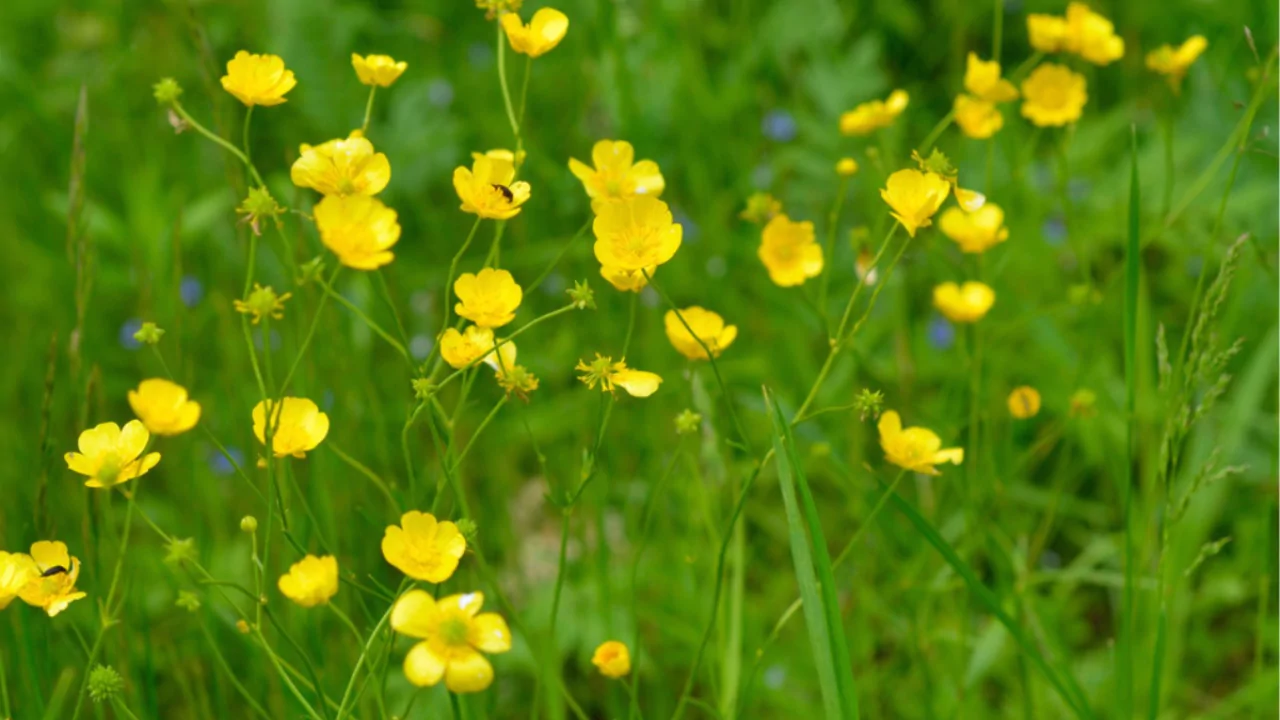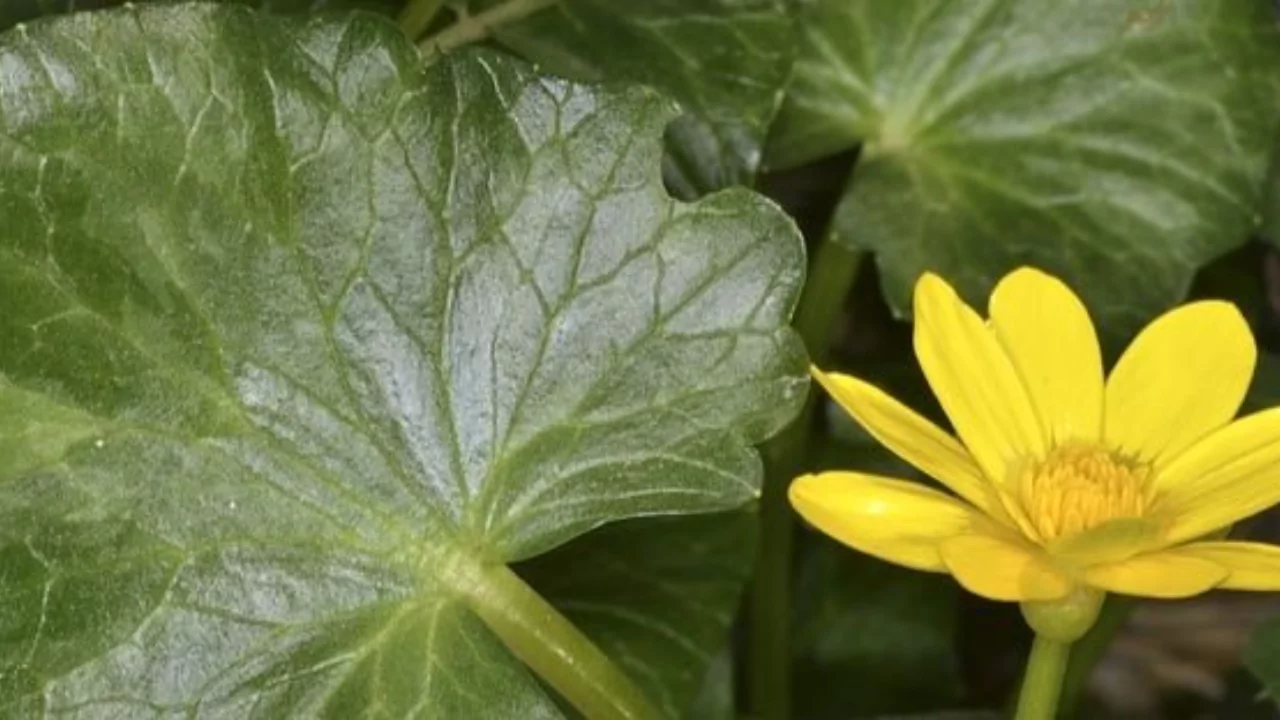
Folklore, especially in southern towns, claims you can test your fondness for butter by holding a buttercup under your chin; if yellow light dances on your skin, you must love the creamy spread (and honestly, who doesnt?).
Modern botanists, however, explain that the bright reflection comes from microscopic surface structures on the petals that scatter light in a way designed to lure in visiting insects.
That charming optical trick, together with the flowers spare sweetness and early summer bloom time, helps the ranunculus-secure a front-row seat at every pollinators feast.
On cooler mornings the petals close slightly and form a shallow bowl that captures sunlight like a miniature solar panel, directing the warm light toward the centers-stirring the pollen and ovules to life and making the whole plant a tiny warming station for hungry bees, hoverflies, and the occasional curious hummingbird.
How To plant Buttercups Flowers
Buttercup Flower Varieties
Buttercups belong to the Ranunculus genus, which includes more than four hundred species; while the majority flaunt golden yellow blooms, pale pink, cool white, fiery red, and rare orange forms also appear in scattered habitats.
These glossy five-petaled perennials-with sturdy foliage-can be found decorating hillsides, valleys, borders, and rock gardens across five continents worldwide only Africa and Antarctica remain without their cheerful splash of color.
Though the world of buttercups contains many species, only these three appear regularly in modern home gardens.
The Persian Buttercup. Ranunculus asiaticus, hails from Asia and flourishes in hardiness zones 8-11. Plants reach about 12 inches high, each stout stem carrying one 3- to 5-inch bloom that varies from semi-double to fully double and resembles a peony.
The Lesser Celandine. Ranunculus ficaria, originates from European woods and Asian stream banks, thriving in zones 6-9.
The Creeping Buttercup. Ranunculus repens pleniflorus, also occupies zones 6-9 but may spread aggressively. Its fully double, inch-wide golden buttons rise above glossy leaves, forming dense carpets that can overwhelm neighbors.
Growing Conditions for Buttercups
Buttercups prefer full sun to partial shade. They tolerate a wider range of moisture than most plants, so long as the soil remains light, cool, and sharply drained.
If buttercups sit under hot sun all day, lay down a light layer of mulch around their crowns to keep the soil from getting too warm.
How to Plant Buttercups
Gardeners can raise buttercups from seed or from small tubers, yet starting them from seed is often frustrating, as the seeds germinate slowly and unevenly. For that reason, most people prefer multiplying established clumps by digging up and dividing the roots.
Do the dividing in spring or early fall, or buy young plants from a nearby nursery. When planting tubers, soak them briefly, set them 1 to 2 inches deep with the pointed end up, and water gently.

Care of Buttercups
In spring, mix a balanced fertilizer into the soil and reapply every month if you want the biggest, brightest blooms.
During long dry spells give them a deep soak, but otherwise buttercups are low-maintenance and ask for very little attention beyond feed and the occasional drink.
In northern gardens, cover the soil with fresh mulch in late fall. This blanket moderates freeze-thaw cycles and insulates the roots through harsh winter weather.
For tidy beds and safety, lift the tubers as leaves fade and the first hard frost arrives. Store them in a cool, dark, dry spot until spring, then pot them indoors for an early start.
Garden Pests and Diseases of Buttercups
Buttercups usually shrug off pests and diseases, yet extended, humid spells may invite gray mold or root rot if drainage is poor.
Buttercups for Indoor Bouquets
Snip the big blooms, especially the double ones that resemble mini-peonies, and take the stem down to soil level so fresh leaves disguise the cut as new flowers emerge.
Beyond the butter-on-the-tongue tale, the common buttercup-spreading wild across North America-carries a tangle of folklore and symbolism wherever it grows.
Its name, ranunculus, links to an old Greek story of a lad draped in yellow-green silk who enchanted woodland nymphs with his sweet singing among the trees.
While he sang, Ranunculus grew so enchanted with his own voice that he fell into a trance and died on the spot. In grief, Orpheus changed him into the bright yellow flower we now call the buttercup, a name that has stuck ever since.
During the song, Ranunculus became mystified and entranced by his own voice and died suddenly. To honor his memory, Orpheus transformed him into the buttercup, which has been known as Ranunculus forever after.
Folklore says the buttercup stands for modesty, tidiness, childlike wonder, and simple charm. Curiously, even though the blooms are poisonous to cattle, people once claimed the flower got its name from the creamy milk the cows produced after grazing on the bright patches.
One tale even suggests a hungry coyote lost his eyes to a diving eagle and decided to swap them out for plump buttercups.
Because of that story, those glowing yellow petals are still called coyotes eyes in many parts of the United States. A different legend pictures a stingy old miser crossing a field with a bag stuffed full of gold coins. As he shuffled along, a band of fairies appeared and asked him for a tiny gift.
When he turned them away, the sprites quietly sliced a rip in his satchel with a blade of grass. The man carried on, oblivious, while coins spilled onto the ground and vanished in the blades, each one blossoming into the cheerful flower we admire today.